2013 Rocky Mountain Altitude 790 MSL
(discontinued)
| Where To Buy | |||
|---|---|---|---|
Free shipping on orders over $50 (continental U.S. only).
International shipping available. Some exclusions apply. |
Free shipping on orders over $50 (continental U.S. only).
International shipping available. Some exclusions apply. $6,139.00
|
||
Free shipping on orders over $50 (continental U.S. only).
International shipping available. Some exclusions apply. |
|||
Reviewed by Steve Wentz, Joe Schneider, and Brandon Turman // Photos by Shawn Spomer and Brandon Turman
The all-new, all-carbon, 650B wheel equipped 2013 Rocky Mountain Altitude came to life just a few months ago, making it a perfect candidate for Vital MTB's Test Sessions in Southern Utah. This 150mm travel rig is Rocky's flagship trail bike, designed with the goal of getting the job done well regardless of the terrain. From the first minute of the Altitude’s design process, Rocky says there was never any doubt that they would build it around 650B wheels, citing limitations of both 26-inch and 29-inch wheels for this kind of bike.
Aside from the DT Swiss 650B wheels, a dose of SRAM X0, FOX Float Kashima CTD suspension, and Rock Shox Reverb Stealth dropper post goodness highlight the impressive build.

Altitude 790 MSL Highlights
- Full carbon construction
- 650B (~27.5-inch) wheels
- 150mm (5.9-inches) of travel
- 42/52mm tapered headtube
- 66.6 to 68.3-degree adjustable head angle
- 73.6 to 75.3-degree seat tube angle
- -10mm to +10mm adjustable bottom bracket drop
- 16.9-inch chainstays
- BB92 press fit bottom bracket with ISCG-05 mounts
- 142mm rear spacing with 12mm through axle
- Measured weight (size medium, no pedals): 27 pounds, 5 ounces (12.4kg)
- $6,900 MSRP

The Altitude 790 MSL is loaded with clever features that make it stand out from the crowd. See the unique front shock mount? That's Rocky's new RIDE-9 system which allows you to change the geometry and suspension rate to your preference. As the name indicates, there are a whopping nine different configurations possible thanks to the two interlocking squares, each of which give the bike a unique set of geometry specs and suspension characteristics. With almost two-degrees of head angle and seat tube angle adjustment, as well as 20mm of bottom bracket height adjustment, the bike was designed to cater to both the XC oriented rider and also to the rider that likes to get rowdy on burly terrain. In certain configurations, it's possible to nearly maintain a geometry setting while changing the leverage rate.

All of the MSL series Altitude frames include impressively clean internal cable routing. Internal cable guides make it service friendly, so you shouldn't find yourself fishing around with a coat hanger and headlamp.
Because carbon fiber and bike chains don’t get along, a molded stainless steel plate at the bottom of the downtube and into the chainstay keeps errant chains at bay.
Finally, Rocky implemented what they're calling "Angular Bushing Concept (ABC) pivots," first introduced on the 2011 Element series, which consist of an angular contact polymer bushing rotating on a tapered alloy pivot. They're claimed to provide double the stiffness and durability of cartridge bearings, and at the proper torque they won't bind like many traditional bushing systems. All told, the ABC pivots are said to save 120 grams over traditional cartridge bearings. Not bad.
On The Trail
To see just how well-rounded the Altitude really is, we rode it on a variety of trails around Hurricane and St. George, Utah. Steve piloted it down the surprisingly rough and rowdy Grafton Mesa trail, Brandon around the techy-in-spots and g-out filled Zen trail, and Joe along the smooth but fast Barrel Roll/Side Winder loop as well as the drop heavy Nephi's Twist ridge ride.
Grabbing ahold of the bars, the Altitude exhibited an immediately comfortable feel. Wisely spec'd with 725mm wide Race Face SixC Carbon bars and a 60 or 70mm Turbine stem, it's within the usable range for the aggressive trail rider. The only collective fit complaint was a slightly cramped feeling, especially on climbs and steep descents. Ranging from 5'8" to 5'11" tall, we found ourselves over the front a bit on the medium frame and would prefer a slightly longer top tube. Maybe a half-inch or so.
Geometry wise, we opted to put the RIDE-9 system in the lowest, slackest setting (66.9-degree head angle). In this position, the Altitude seems right in the middle of everything. It's neither steep nor overly slack and there are no glaring problems. While it certainly got the job done well, we all felt as though the bike could use a slightly slacker setting to inspire a little more of an attack feeling when the going gets really rough.

Pointed downhill, the Altitude never disappointed us when riding through turns, roll-ins, moderately rough sections or slow technical bits. It rolled over just about anything and was easy to pull back and let it rip, gaining speed very quickly. It has excellent handling manners and the wheels likely played a small roll in this. In fact, it's one of the better feeling 650B bikes we've ridden thus far. Combined with the moderately slack front end, this bike will likely get you out of any trouble you roll into. It has a nimble cross country feel with a little bit in reserve to save you if things go awry. The bike took square edge hits well, was very balanced, supple, and provided ample grip when called for.
In the slackest setting, the Altitude uses its most progressive suspension curve. But was it progressive enough? The suspension performance received mix reviews over the course of our Test Sessions. Steve's rough descent down the Grafton Mesa trail proved to be a bit overwhelming at times:
"When bigger hits came into play, the FOX Float CTD suspension was easily overwhelmed, both front and rear. The bike is very balanced, which I liked a lot, so it's inviting for riders to push the limits of what the bike and suspension can do. I did that, and much to my dismay when I would try to preload the bike and jump or really drive the back wheel into the ground, I would go through all the travel. It was a lot of work to move the bike because I had to get through most of the 150mm of travel to get much of a response. I could keep the same or close to the same trail speed with lots less work just floating along and letting the suspension do its work, while being passive on the bars and pedals. This is great for some, just not for me.
On the positive side, staying in the middle of the bike was an excellent way to approach trail riding on the Rocky Mountain. Over the back too much and the rear would bottom out. Over the front too much would promote lots of fork dive, despite using the stiffer "Climb" setting on the fork while on rough descents. Stay in the middle and all is good. Lots of successive small and medium bumps are soaked up extremely well with the Rocky Mountain's suspension. When I would blow through some of the suspension, the bike still seemed to stay on line, stable and comfortable, it just didn't want another big hit right away.
If I was going out for a six-hour epic, I would like to take this bike only because I would know I can't ride it the way I want all the time, I just don't have the fitness to do that. I'd have to chill out, enjoy the ride and make some fun turns, and the Rocky would do that very, very well. Overall, I think it would be an excellent ride for a trail rider that wants to put a lot of time in the saddle or someone who loves tight twisty singletrack and would stand up to corner. When the trails get dynamic it suffers. It wouldn't be the best option for someone who enjoys jumping or tackling drop options on trails."
Due to limited time we were unable to change the RIDE-9 setting as much as we would have liked, which left us curious as to how it would perform in the other modes. The process takes a couple of minutes and is easiest with a few extra helping hands.

Headed up the climbs and on the flats, the Altitude felt light and snappy. Rolling speed was impressive and the bike liked to keep moving over technical terrain, thanks in part to the larger wheels. Rear end traction was great while standing, and combined with 16.9-inch chainstays it made it easy to get up most technical moves. It responded quickly to pedaling inputs, but some slight bob was noticeable in the small front ring, especially during hard efforts. Overall, though, the climbing performance was great considering it's a six-inch travel bike. It feels like it has less travel than it actually does when ascending, which is an important characteristic to consider when looking for a bike that you can spend a lot of time on.
Build Kit
Throughout the course of our Test Sessions, we found ourselves swapping bars, stems, and seatposts left and right. The Altitude needed none of those and is spec'd with a pretty impressive array of parts.

Schwalble's Nobby Nic tires weren't a concern and proved to be consistent, predictable, and fast. Pinch flat protection was impressive as well.
Oddly, Rocky Mountain lists the bike as having Avid's XO Trail 4-piston brakes, but our ride was equipped with the standard 2-piston variety. That said, the XO brakes were reliable, had good initial bite, and didn't have fade issues on any of the trails.
Rocky's rubber seat collar sleeve helps keep things dry inside, which is a very nice touch, especially for Shore and UK riders.
Aside from a few slow upshifts from the small chainring to the large ring, we had no issues with the front end of the drivetrain. We'd happily trade climbing the steepest grades for quicker upshifts if the bike had a 26 or 28 tooth small ring to replace the 24 it came with. This might also help with the slight amount of pedal bob experienced in the small ring.
SRAM's XO Type II derailleur kept things pretty quiet out back and did a great job of keeping the chain on, but some chain slap was still present. Overall we found it to be a very quiet ride.

If we had to pick two things to nitpick about, it'd be the bar-mounted remote lever and the saddle. All MSL series Altitudes are equipped with remote for the CTD Float rear shock. While the cable cleanly disappears into the frame, we could do without it entirely. It adds expense, complexity, an extra cable, and is one more thing to break. Also, for such a great bike to choose for an all day endeavor, the Fizik saddle lacked the comfort and padding needed for those long days.
Long Term Durability
Thinking ahead, potential areas for concern include loose wheels, the possibility of a creaky RIDE-9 system, and probable maintenance of the "ABC" pivots. With just three rides under our belt there were no apparent issues. The Altitude looks solid.

What's The Bottom Line?
Rocky Mountain's Altitude 790 MSL is a well thought-out ride for the all-day adventurer. The combination of 650B wheels, a comfortable cockpit, smart component selections, and an impressive range of adjustability make it a good fit for a pretty large range of riders. It rolls fast, keeps momentum in rough terrain, handles well, climbs efficiently, and provides some assurance on the descents. The most aggressive riders may find the lack of usable suspension damping to be a deterrent, but it's a problem that's worth solving given the bike's dozen of other positive characteristics.
For further details about Rocky's newest ride, visit www.altitude.bikes.com or www.bikes.com.
See it in action! Check out 44 photos of the Rocky Mountain Altitude 790 MSL
_______________________________________________________________________________________________
About The Reviewers
Steve Wentz - A man of many talents, Steve got his start in downhilling at a young age. He has been riding for over 17 years, 10 of which have been in the Pro ranks. Asked to describe his riding style he said, "I like to smooth out the trail myself." Today he builds some of the best trails in the world (and eats lots of M&M's).
Joe Schneider - During the day, Joe's busy solving complex mechanical engineering problems. When he's free, he's out crushing miles on his bikes and moto. He raced cross-country for several years, made an appearance on the Collegiate National Champs Omnium, turned Pro, and more recently shifted his focus to enduro.
Brandon Turman - Brandon likes to pop off the little bonus lines on the sides of the trail, get aggressive when he's in tune with a bike and talk tech. In 13 years of riding he worked his way through the Collegiate downhill ranks to the Pro level. Nowadays he's Vital MTB's resident product guy.
Specifications
| Where To Buy | |||
|---|---|---|---|
Free shipping on orders over $50 (continental U.S. only).
International shipping available. Some exclusions apply. |
Free shipping on orders over $50 (continental U.S. only).
International shipping available. Some exclusions apply. $6,139.00
|
||
Free shipping on orders over $50 (continental U.S. only).
International shipping available. Some exclusions apply. |
|||





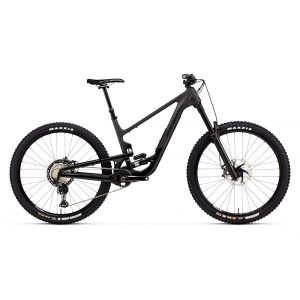

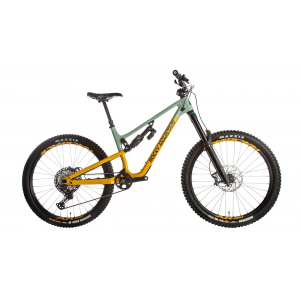


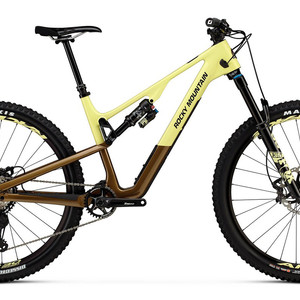
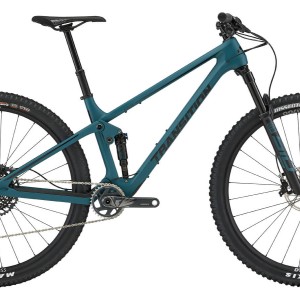


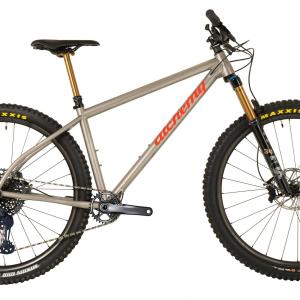

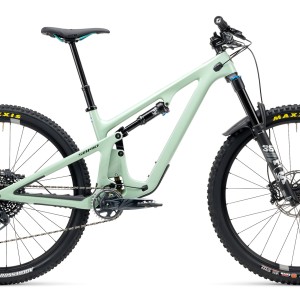






7 comments
Post a reply to: 2013 Test Sessions: Rocky Mountain Altitude 790 MSL